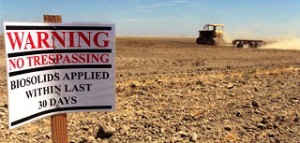From Guest Blogger Grace Wood: Sustainable Agriculture – Nature as an Ally with Holistic Management

Countering the desertification problem
The concept of holistic management came about thirty years ago, when Allan Savory observed that Zimbabwean grazing lands, once green and fertile, were growing into deserts. At the time, livestock farming was labelled as the cause of the destruction of wildlands. The common thought was that the constant trampling of the ground by herds led to the overgrazing of plants, soils depletion and reduced biodiversity. The environmental impact of livestock has also always involved high energy requirements and important greenhouse gas emissions.
Surprisingly, Allan Savory discovered that even when the number of cattle per pasture significantly decreased, grazing lands still suffered a drop in productivity. The decay of flora, which was happening simultaneously with the reduction of herbivores, meant that contrary to popular belief, cattle was not the cause, but the solution to the desertification problem.
Today, the advance of the desert is a problem that does not only concern arid and semi-arid terrains. Grasslands are equally touched by the phenomenon. Economic pressures and a growing world population have forced many farmers into adopting unsustainable practices which involve drastic costs reductions and intensive land use. As a result, there is a rising percentage of impoverished soil across the world and the impact on the global macro-climate might soon become irreversible.
Healing and nourishing the soil
Holistic Management advocates “planned grazing” or “rotational grazing”, which reproduces natural herd movements: contrary to traditional sedentary livestock settlements, holistic management stipulates that herds should not stay more than two or three days on the same ground area. Manure and mulch represent an excellent plant litter which builds the organic matter in the soil. Animal droppings are also rich in microorganisms that contribute to increasing the water holding capacity of the soil and immunizing it against erosion. Once the land can absorb and retain rain and store carbon, plants and prairie grass can regrow. In holistic management, cattle, sheep, chicken and pigs are used to build the soil. Pigs, for instance, play an important role in performing reparative functions by turning the soil and eating invasive species.
Holistic Management has already been successfully implemented around the world. From these results, Allan Savory has concluded that if such a technique were to be applied to at least half of the globe’s surface on which herds graze, we would be able to return to a carbon footprint similar to that of pre-industrial times.
Although livestock is often involved in Holistic Management, it is not always the case. Farmers can reap the benefits of this method whether they raise animals or simply grow grain or vegetables. Some of the methods used to increase soil fertility include solar-powered irrigation, reforestation, cover-crops and no pesticides, fertilizers or tilling… saving holistic farmers time and money. On the other hand, traditional farms have been constantly upscaling and chasing more acres in order to deal with increasing input prices and tumbling crop prices. Big acres represent a costly investment as they require expensive and large agricultural equipment and tools to prepare and harvest the land.
Embracing the holistic management decision-making framework
Holistic Management is about looking at how nature functions as a whole: if farmers manage towards effective synergistic relationships, they are going to be far more sustainable than if they are constantly fighting nature. It is a state of mind and a complete management framework that harmonizes environmental, social, and financial goals.
More and more non-profit organizations are speaking out and spreading the word about how to create a holistic management team and financial plan. The courses teach farmers how to plan a profit, improved grazing strategies to grow more grass, cropping strategies to improve soil fertility and monitoring and control techniques. There is also the added bonus of learning with a group of other farmers and belonging to a community that is striving to feed a growing world population in a sustainable way.
Allowing people to work together effectively is probably one of the most overlooked benefits of Holistic Management. By improving the effectiveness of small agricultural structures, it has brought back the synergy of families farming together. Holistic Management is indeed a powerful tool when it comes to handing off the farm to the next generation. Not only does it enable the establishment of a successful business to hand over, it also sets a positive mindset that increases personal well-being and satisfaction. All the more reasons to encourage the younger generation to stay in their rural communities and take over successful, sustainable farming projects.

It’s an interesting article. I favor doing anything that is helpful in the long range.